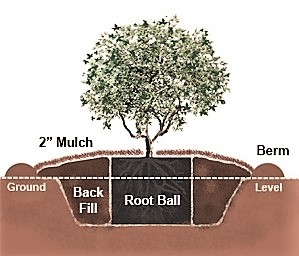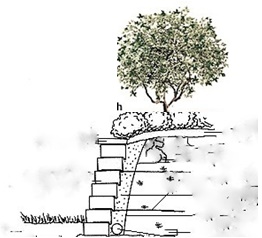In the northern mid-Atlantic region
Click here to download word document —> success_with_crapemyrtles
Anyone who has travelled to the shore or ‘down south’ in mid-summer, has no doubt seen hundreds of these showy bloomers. Crapemyrtle has been making its way north for the past several decades! This is primarily due to the hybridizing efforts by the U.S. National Arboretum in Washington D.C., and by Crapemyrtle enthusiasts such as Dr. Carl Whitcomb of Oklahoma State University.
BASIC CARE, IT’S REALLY NOT THAT COMPLICATED…:
* RULE #1: (Most Important!) Plant in well-draining soil. A raised bed, berm or sloping area is ideal. Do NOT plant flush with the ground. If the location puddles or stays very damp after a rain, it will not survive the winter in this area. (Stem tissue will not harden off properly). Properly planted crapemyrtle will thrive!
* RULE #2: Crapemyrtles love the heat, so put them in as sunny a spot as you have. They will easily take the extra heat that occurs near a south-facing wall or fence. If full sun isn’t available, ½ day sun will suffice. (reds need more heat/sun)
* RULE #3: Fertilize in the spring, because they bloom on current year’s growth. Preferably ‘Plant-tone’ or ‘Flower-tone’ or a comparable product. Mature plants will most likely not need any additional fertilizer.
* RULE #4: Trim, if needed, in early spring (April or early May), ideally before much new growth ensues. Later trimming will not hurt the plant, but may delay or eliminate flowering. If you trim a branch, it needs at least 6-8 weeks of hot weather before it blooms. Therefore, trimming all the branches after mid-July will likely ruin your chances of enjoying the blooms.
CRAPEMYRTLE NO-NO’s:
* Don’t plant in an area which puddles after a rain. Plant in soil of very good drainage. In fact, plant it very high, and build soil around it, or include it in a raised bed planting. This point cannot be stressed enough!
* Don’t fertilize after August 1st. The resulting new growth will not harden off properly before frost and will die back in the winter.
* Don’t prune heavily after August 1st. Again, the resulting new growth after pruning will not be ready for winter. This puts the whole tree at risk.
* Except for newly planted trees, don’t water or fertilize in the fall. Let the stems ‘harden off’ for the upcoming winter. Better to have drought stress rather than too much lush, soft growth!
Examples of properly located crapemyrtles:
Keep in mind that crape myrtles are naturally late to come out in the spring, but then grow very rapidly with the onset of hot weather. So be patient, and Enjoy!


